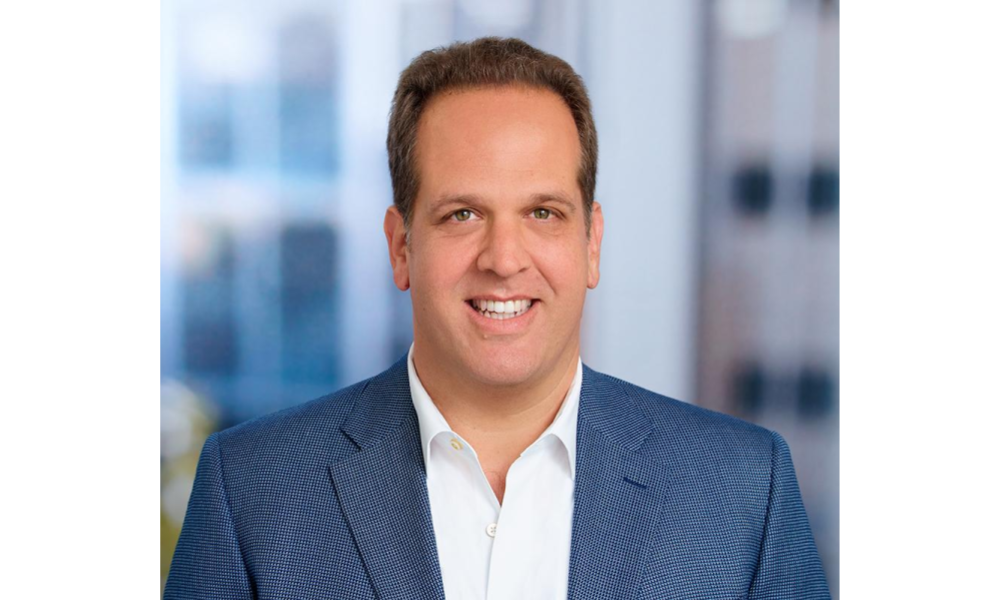Acquisitions
Inside the Boardroom: Eric Samek
By
Joseph Richter

The Real Estate Daily Beat equips real estate firms and industry leaders with exclusive news and insights to inform impactful decision making. Learn more about corporate subscription here.
Eric Samek, Founder of Brasa Capital Management, joined us on the heels of raising $450 million for the firm’s second non-core fund. We discussed current market volatility, Brasa’s strategy moving forward, and why deal syndication is so popular within the industry.
Daily Beat: Can you please share your background?
Eric Samek: I founded Brasa Capital four years ago as a minority owned real estate investment manager. Prior to that, I had spent over a decade running the Western US for AEW’s Opportunity Fund.
Brasa’s Fund I had its first close in September of 2018. The first half was high net worth individuals and family offices. We were then introduced to GCM Grosvenor’s emerging manager program and they came in for a good chunk of Fund I. They invest on behalf of pension funds that don’t have the time and the resources to find an up and coming manager.
Daily Beat: What sectors and markets do you invest in?
Eric Samek: We’re geographic specialists and exclusively focus on the Western US and Texas.
Within those markets, we invest across all product types, so we’ve done everything from life science to self storage to medical office. Our investments over the past few years have predominantly fallen into the industrial and residential sectors.
Daily Beat: Those were good sectors to be focused on!
Eric Samek: Yes. We did 16 deals in our first fund and sold eight of those, which have generated nice returns to our investors.
We then went out to raise Fund II and had a first close in March 2021. The fund had a $300 million target and we had our final close last month at our hard cap of $450 million.
Daily Beat: Research shows that there’s arbitrage in the middle market and you’re able to find better deals because of that scalability issue. How do you define the middle market?
Eric Samek: We define the middle market as $5 to $35 million in equity checks. I agree with you that it’s much easier and scalable to write bigger checks. Interestingly, if you look back historically – even a decade ago – there were a number of firms that operated in the space that we’re in, but have now graduated with funds that are over $1 billion. That has left a void.
There are some studies that show that middle-market transactions are more efficient and the reason is simple. Many family offices and high net worth individuals cap out at a certain amount and then institutional funds won’t cut equity checks less than $50 to $100 million dollars.
This reality has left this inefficient gap in the middle. It takes the same amount of time to to cut a $25 million or $250 million check
Granted, the process demands more work, but we are grinding it out to the benefit of our investors and are proving that this method generates alpha.
Daily Beat: When it comes to fundraising, why do you think syndication is so popular in real estate? Why do investors choose specific deals over diversification?
Eric Samek: Real estate investors would much rather know what they’re buying. As an example, if you went to a New York investor and said that you’re buying an office building in Hudson Yards, they enjoy knowing the specific asset they are invested in over simply entering a blind pool fund.
That’s why there are a lot of syndicators because investors know exactly what asset they’re getting. From a sponsor standpoint, the benefit is that they’re not crossing their promote with the whole fund.
Syndicators’ economics are better than fund economics. Meaning, if a deal hits, they reap the rewards and if it doesn’t work out, it’s one deal and doesn’t take down the whole fund.
Daily Beat: I guess both approaches can serve investors well depending on the circumstances.
Eric Samek: I think it’s harder to raise money for a fund than a deal. People are entrusting you with their money for a long period of time and they don’t know what they’re buying, so it’s harder to get those investors.
Daily Beat: I’ve always found it ironic over the years that when you have a hot sector – take industrial / logistics as an example – the fundraising continues to pour in to chase deals after peak performance. Meaning, institutional investors and the pension funds want to get involved in the sector now, which likely will not offer the same growth rates over the next 10 years. How do you deal with having more capital to deploy in the sector at this point?
Eric Samek: I think exactly like you do. Investors pay us for the flexibility in our mandate to invest across the asset classes because it’s not always going to be logistics. That has certainly been the flavor for the past few years, but if you look forward five to ten years from now, it’s more likely than that that we’ll find interesting opportunities in different asset classes.
When I look back at different funds throughout my career, there are typically two sectors that dominated the early funds, but ones were rarely the same for more than two funds. Sometimes it was a medical office, self storage, or apartments, but it didn’t remain constant.
Daily Beat: For industrial specifically, what type of deals can still generate good returns?
Eric Samek: We don’t have the cost of capital to just go out and buy existing industrial assets. Our expertise is in either identifying ground-up development or finding value-add deals.
Daily Beat: So I assume that Brasa is an allocator and that you’re writing checks on some of these industrial development deals.
Eric Samek: We are the JV equity for a lot of ground up development for industrial because we can still get the spread with those deals.
Daily Beat: What type of returns are you targeting?
Eric Samek: We’re targeting 13 to 15% Net IRRs. If one is being intellectually honest, you can’t achieve that by buying existing industrial assets at current prices.
Daily Beat: How about multi-family? Are you seeing some existing properties that offer enough rent growth potential?
Eric Samek: Yes. Multi-family is more varied and are able to buy some existing assets, which tends to be on the smaller side or secondary high growth markets, not the gateway cities.
When it comes to development, we tend to build workforce, garden-style apartments on the outskirts of growing cities like Dallas, Phoenix, and Denver.
Daily Beat: Texas has been on fire. Are there any specific locations in Texas that you view as hidden gems?
Eric Samek: I grew up in Texas, so I know it pretty well. Most institutional investors in Texas are focused on the three big markets of Houston, Dallas, and Austin. Those are obviously markets that we’ve invested in.
To answer your question, though, we believe that San Antonio is a little bit of a sleeper and very interesting as well.
Daily Beat: Are you doing any debt deals?
Eric Samek: Yes. We buy non-performing loans or originate rescue capital in the form of mezzanine debt or preferred equity. The debt deals are done by ourselves without a sponsor.
Daily Beat: How has market volatility and rate hikes impacted deals that you’re currently working on?
Eric Samek: We’ve seen significant impacts in terms of pricing for assets that have long-term leases of 10 to 20 years – be it with a government or credit tenants where you only have 2 to 3% bumps. Those deals have taken hits because of what’s happened to rates and inflation expectations.
However, if you take an industrial building that we have on the market in the Inland Empire, valuations are only down slightly. The nice thing is that we don’t need to make the big macro bets because our fund size is small enough that we find interesting opportunities in good times and bad times.
Daily Beat: Office REITs aren’t doing well and many are trading near their March 2020 lows. Vornado stands as nearly two-thirds of its $6 billion in mortgages are floating rate. With the cost of caps skyrocketing, how are you protecting yourself?
Eric Samek: Historically, we have been more of a bridge borrower with a typical three year term, plus two, 1-year options. Now, we’re starting to look at more fixed rate options. Your point about the cost of caps skyrocketing is super on point and we’re seeing that every day.
Daily Beat: Who is getting impacted the most?
Eric Samek: A lot of the impact is dependent on how leveraged buyers are. One of the deals that we’re currency selling is going to an institutional all cash buyer, so as a result the pricing really isn’t impacted that much.
Syndicators can’t buy an apartment building at a three and a half cap anymore given the cost of debt, unless you think rents are going to go up to the point where you can achieve positive leverage.
Daily Beat: Has Blackstone’s BREIT changed the fundraising game?
Eric Samek: I think that trend of democratizing real estate investing for the mom and pop investors will continue. Before Blackstone’s BREIT and Starwood started doing it, the system was kind of flawed in terms of the fee structures where you invested a dollar and only put 85 cents to work.
That was a product that was sold, not bought. Blackstone, on the other hand, has structured this in a super smart way and I think it will continue attracting retail investors.
The institutional piece is still going to be a big part of it, but for them to have a whole new opportunity set of investors through these high net worth individuals is going to continue to grow.
Daily Beat: The irony is that Cadres and CrowdStreets of the world haven’t been able to capitalize it and here you have Blackstone demolishing them. It’s kind of amazing how it works out.
Eric Samek: Yes. Those guys probably raise more in a month than Cadre and CrowdStreet have raised since their inception.
*The interview has been edited and condensed for clarity.





